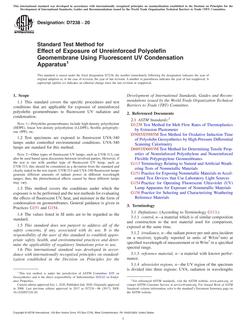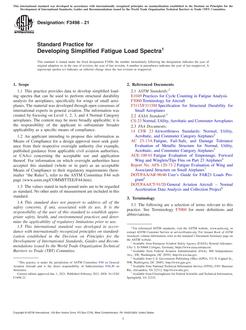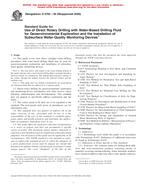1.1 These test methods cover procedures for testing rigid electrical insulation normally manufactured in flat sheet or plate form. They are generally used as terminal boards, spacers, voltage barriers, and circuit boards.
Note 1 – For tests applying to vulcanized fibre reference needs to be made to Test Methods D619.
Note 2 – This standard resembles IEC 60893-2, Specification for Rigid Industrial Laminated Sheets Based On Thermosetting Resins for Electrical Purpose, Methods of Tests.
1.2 The test methods appear in the following sections:
| Test | Sections | ASTM Test Method |
| Acetone extractable matter | 83 to 84 | D494 |
| Arc resistance | 47 | D495 |
| Ash | 56 to 60 | … |
| Bonding strength | 49 to 54 | … |
| Burning rate and flame resistance | 61 to 75 | … |
| Compressive strength | 25 | D695 |
| Conditioning | 4 | D6054 |
| Dissipation factor | 34 to 40 | D669 |
| Dielectric strength | 28 to 33 | D149 |
| Expansion (linear thermal) | 76 | D696 |
| Flexural properties | 12 to 24 | D790 |
| Hardness (Rockwell) | 55 | D785 |
| Insulation resistance and resistivity | 41 to 46 | D257 |
| Permittivity | 34 to 40 | D150 |
| Resistance to impact | 26 | D256 |
| Tensile properties | 7 to 11 | D638 |
| Thickness | 5 to 6 | D374 |
| Tracking resistance | 48 | D2132 |
| Warp or twist | 77 to 82 | … |
| Water absorption | 27 | D570 |
1.3 The values stated in inch-pound units are to be regarded as standard. The values given in parentheses are mathematical conversions to SI units that are provided for information only and are not considered standard.
1.4 This is a fire-test-response standard. See Sections 61 through 75, which are the procedures for burning rate and flame resistance.
1.5 This standard does not purport to address all of the safety concerns, if any, associated with its use. It is the responsibility of the user of this standard to establish appropriate safety and health practices and determine the applicability of regulatory limitations prior to use. Specific precautionary statements are given in 31.1 and 1.6.
1.6 This standard measures and describes the response of materials, products, or assemblies to heat and flame under controlled conditions, but does not by itself incorporate all factors required for fire hazard or fire risk assessment of the materials, products, or assemblies under actual fire conditions.
1.7 Fire testing is inherently hazardous. Adequate safeguards for personnel and property shall be employed in conducting these tests.
17.1 This test method covers the determination of flexural properties at elevated temperature, and as a function of time of exposure to elevated temperature.
Product Details
- Published:
- 10/01/2009
- Number of Pages:
- 18
- File Size:
- 1 file , 430 KB
- Redline File Size:
- 2 files , 780 KB


